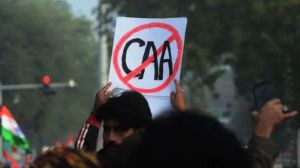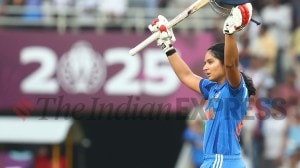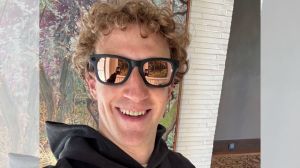PM trips up Kalam
President Abdul Kalam had to be content touring Bulgaria, Sudan and the UAE on his first state visit abroad. Many of the exciting destinatio...

President Abdul Kalam had to be content touring Bulgaria, Sudan and the UAE on his first state visit abroad. Many of the exciting destinations he would have liked to have traveled to had already been visited by Vajpayee, or else are on the PM’s itinerary for forthcoming tours. By convention the prime minister, president and vice president do not visit the same countries as the host nation is reluctant to arrange two state visits for Indians within a short span. Vajpayee’s travel programme this year included USA, Turkey, Switzerland, Russia, Germany, Switzerland, France, England, China, Thailand and Indonesia. Malaysia, Iran, Tajikistan, Kazakhistan, Syria, Nigeria and Australia are countries he will be visiting in the coming months.
Officials in the Ministry of External Affairs and Rashtrapati Bhavan scanned the world map to locate countries which Vajpayee had not visited recently or were not shortlisted for future tours. Kalam was keen on Spain and Greece since Vajpayee had somehow missed out these two destinations, unfortunately both nations had a problem accommodating Kalam at this juncture. Vice President Bhairon Singh Shekhawat is naturally at an even bigger disadvantage, since he can travel abroad only to those countries ignored by both Kalam and Vajpayee. Small wonder that the vice president ends up so frequently in his home state much to the chagrin of the Congress which charges him with dabbling in party politics in Rajasthan.
Privatising LAD
The Parliamentary Consultative Committee passed a resolution that MPs should be entitled to invest Rs 25 lakh out of their annual Rs 2-crore Local Area Development (LAD) Fund in private institutions like schools and NGOs. But neither the government nor Parliament has approved the proposal, which would mean a radical shift in the concept of the LAD scheme. The rationale of the LAD scheme is that MPs have an opportunity to boost government development activity in their areas. Investment in the private sector would open the floodgates for corruption, since there is no method for ensuring accountability.
The resolution has yet to be cleared by the Cabinet, but 85 MPs have already channelled some of their LAD funds to the private sector by arm-twisting the district collector quoting the consultative committee resolution. These MPs are now in deep trouble since the government has written to all collectors and district magistrates asking them not to release further LAD funds to parliamentarians who do not provide proper utilisation certificates from recognised government bodies.
Indo-Italian Hitch
Italian Prime Minister Silvio Berlusconi is to visit India next month and the Italian embassy has been discussing arrangements with the Indian authorities. An Italian diplomat suggested that to avoid any glitches during the prime minister’s tour the CBI should ask that the red alert on Italian businessman Octavio Quattrochhi be revoked. Snam Progeti’s former head in India may have been allowed to go scott-free by the Malaysian courts but because of the Red Alert put out by Interpol at the behest of the Indian government, Quattrochhi cannot return to Italy. India however, is not prepared to allow the man linked to the Bofors payments to be let off the hook even if it puts a damper on Indo-Italian relations.
Vajpayee’s Road Map
No Indian political leader can compare with the Nehru-Gandhi clan in the number of institutions, schemes and roads named after them. The advantage of belonging to a political dynasty is that the next generation is committed to commemorating the names of predecessors. Still the bachelor Prime Minister Atal Behari Vajpayee has not done badly for himself. In fact, Vajpayee has ensured that his name goes down in posterity as the greatest Indian road builder since Ashoka and Sher Shah.
Vajpayee’s pet project, the quadrilateral six line highway scheme, stretches 5846 kilometres across the length and breadth of the country connecting Delhi-Mumbai-Chennai and Calcutta. The project, which was inaugurated by the PM in Karnataka in 1999 and will be complete by 2005, is universally referred by construction workers, truckers and farmers alike simply as ‘‘Vajpayee’s road.’’ Transport Minister Major General B C Khanduri and his predecessor Thambidurai helped popularise the nomenclature by always attaching the PM’s name when referring to the highway in their speeches.
Powerful Opponent
Prime Minister Vajpayee would like to bring Shanta Kumar back to the Cabinet. Kumar was removed for his open criticism of his rival in the state P K Dhumal, who was his successor as chief minister of Himachal Pradesh. To buttress their case that the veteran Himachal leader’s loyalties are still suspect, his opponents within the BJP have even produced newspaper clippings to show that the Congress chief ministers of Madhya Pradesh, Delhi and Chhattisgarh had donated Rs 10 crore each from their respective state funds for Kumar’s privately run charitable hospital in Palampur, HP. The main opponent to Kumar’s reinduction is party president Venkaiah Naidu, whose animosity is based not so much on Kumar’s defiance of party discipline as to the fact that Kumar succeeded him as rural development minister and wound up several of his pet projects for his home state of Andhra.



- 016 hours ago
- 027 hours ago
- 038 hours ago
- 048 hours ago
- 058 hours ago




























